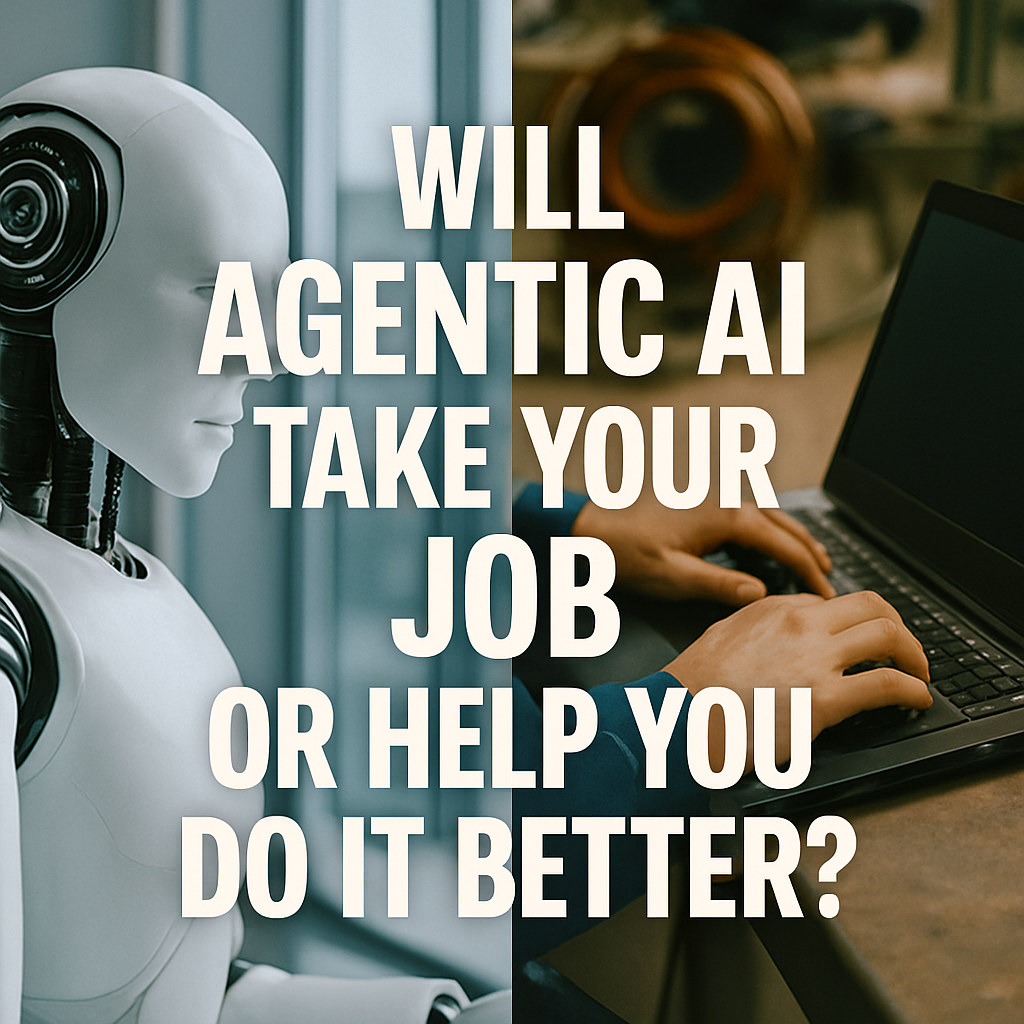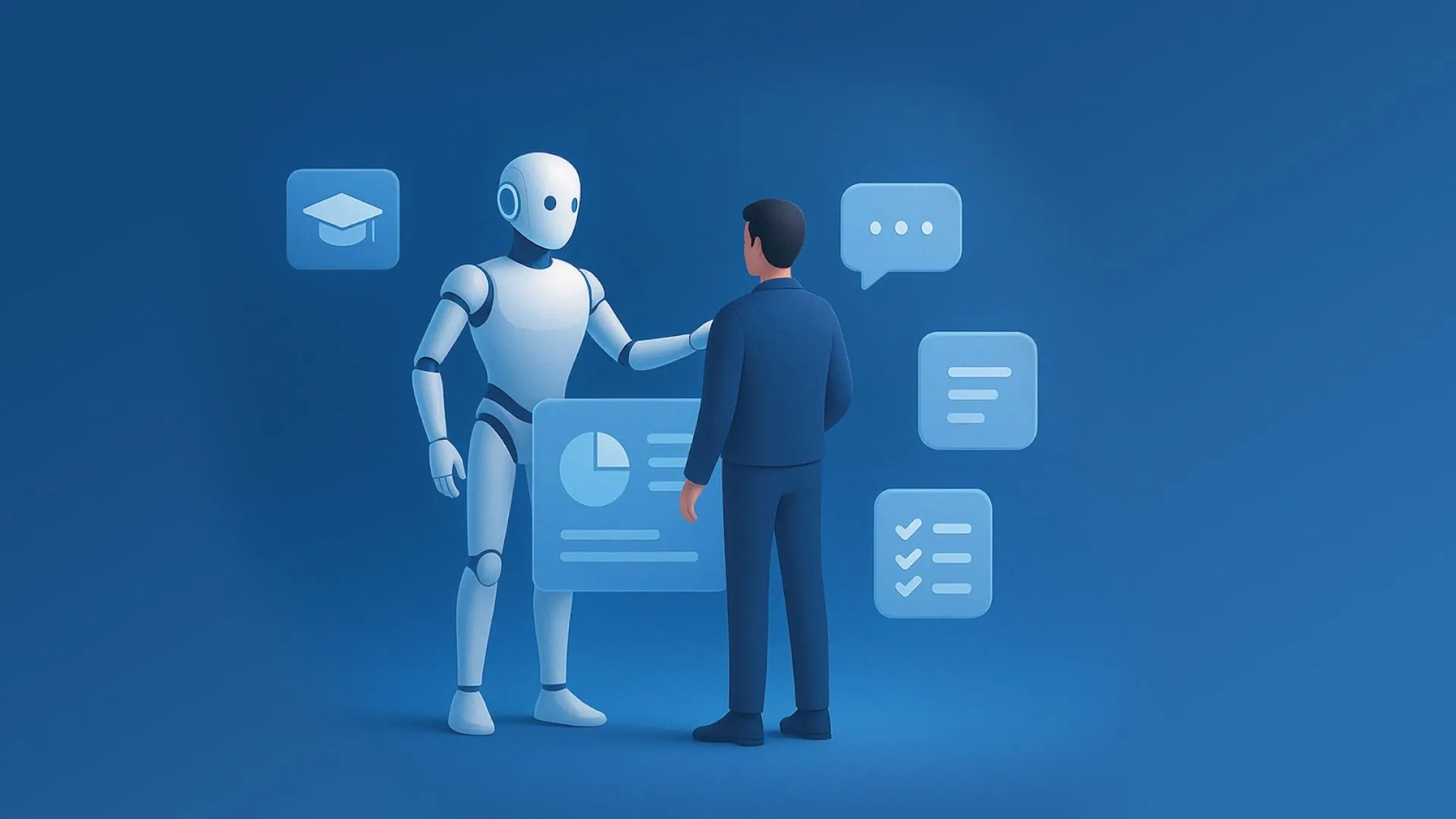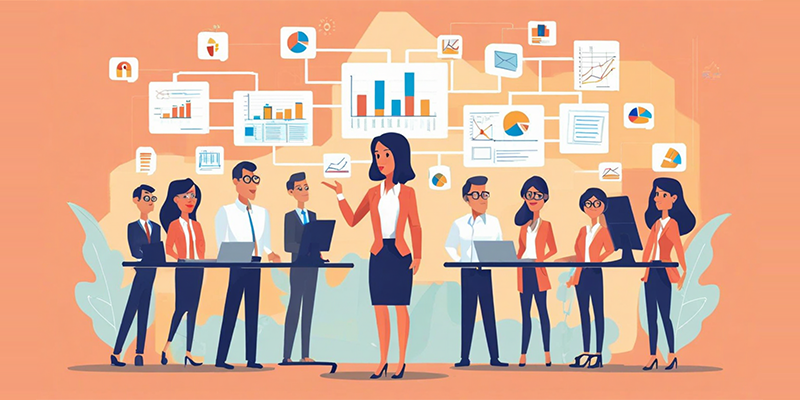Agentic AI Is Here: How Autonomous Agents Are Changing Work Forever
Explore how Agentic AI, with autonomous agents and micro LLMs, is revolutionizing work, boosting productivity, and transforming smart cities, while addressing job impacts and privacy concerns.

Written by Lavanya, Intern, Allegedly The News
The Dawn of Agentic AI
The world of artificial intelligence is rapidly evolving from reactive systems to the proactive capabilities of Agentic AI. This next generation of AI operates with remarkable autonomy, making independent decisions and executing multi-step tasks with minimal human oversight. Unlike traditional AI, which often works within predefined parameters, Agentic AI can analyze complex situations, develop strategies, and take actions to achieve broad objectives.
Agentic AI builds on generative AI (GenAI) and large language models (LLMs). While generative models create content, Agentic AI applies those outputs to achieve specific goals, often by calling external tools and APIs.This means an agentic system can not only produce information but also use it to complete complex tasks autonomously, such as booking flights and hotels based on a user's schedule. Key features of Agentic AI include self-preservation, goal-directed behavior, continuous learning, and social intelligence, enabling effective interaction with humans and other agents. This evolution promises to redefine productivity and the nature of work across industries.
The Genesis of Autonomy: A Timeline of AI Agent Evolution
The journey towards Agentic AI spans decades of innovation, from early programs to today’s sophisticated autonomous systems.
- 1950s–1960s, Foundational Concepts: Alan Turing's Turing Test (1950) questioned machine intelligence, leading to the Dartmouth Conference (1956), the official birth of AI, and ELIZA (1966), the first chatbot.
- 1970s–1980s, Rule-Based Systems: Expert systems like MYCIN dominated, using predefined rules. PROLOG (1972) emerged for logic-based AI, alongside breakthroughs in reinforcement learning.
- 1990s, Intelligent Agents Emerge: AI systems gained autonomy, processing information and making basic decisions. Early virtual assistants appeared, paving the way for modern chatbots.
- 2000s, Machine Learning Dominates: The "ML Boom" saw AI agents leverage statistical models for better decision-making. NLP advancements made AI agents more conversational, exemplified by IBM Watson's Jeopardy! win in 2006.
- 2010s, Deep Learning Revolution: Deep Learning, marked by AlexNet's image recognition breakthrough (2012), boosted AI capabilities. OpenAI's GPT-3 (2020) enhanced conversational AI, and agents expanded into physical realms like self-driving cars.
- 2020s, The Agentic AI Era: This decade marks a shift to greater independence. Agentic AI adapts to changing conditions and operates for extended periods without human oversight. "AI engineers" like Devin AI can debug and write code autonomously, and multi-agent collaboration simulates human teamwork. Generative AI now supercharges these agents, making them proactive problem-solvers.
Reshaping the Workforce
Agentic AI is poised to profoundly reshape the modern workforce, bringing both concerns about job displacement and opportunities for human augmentation.
Impact on Productivity
Agentic AI solutions offer significant productivity gains. These systems can execute multi-step tasks and processes that are impossible or time-consuming for humans alone. Productivity enhancements come from optimizing workflows, sophisticated data analysis, and dramatically reducing human error rates (e.g., 25% average reduction across cases). Unlike human employees, Agentic AI's machine learning algorithms continuously learn and improve from structured data and feedback, leading to dynamic efficiency.
Job Displacement vs. Augmentation
While Agentic AI can automate systematic and repetitive tasks, raising concerns about job displacement, a more nuanced view emphasizes job augmentation. Agentic AI is increasingly seen as a complementary force, amplifying human capabilities rather than replacing them entirely. This shifts the job market towards non-routine roles, fostering new positions requiring a blend of AI expertise, data analysis, and domain-specific knowledge.
Human-AI Collaboration and "Superagency"
The true transformative potential lies in human-AI collaboration. AI empowers employees with decision-making support, automated problem-solving, and advanced analytical abilities, leading to higher productivity and quality. This symbiotic relationship is termed "Superagency" by Reid Hoffman, describing a state where individuals, empowered by AI, significantly amplify their creativity, productivity, and positive impact. Even those not directly interacting with AI can benefit from its broader effects on knowledge and efficiency. For instance, a call center representative aided by AI can synthesize vast data to suggest responses, and by 2025, an AI agent can autonomously process payments and check for fraud during a customer conversation. This fundamentally alters how knowledge is accessed and used, leading to more efficient problem-solving and innovation.
Expert Perspectives
Leaders offer varied perspectives. Sundar Pichai, CEO of Google, states, "The future of AI is not about replacing humans, it's about augmenting human capabilities". Ginni Rometty, former CEO of IBM, warns, "AI will not replace humans, but those who use AI will replace those who don't". These views highlight AI as an empowering tool. However, Elon Musk expresses caution, stating, "AI is likely to be either the best or worst thing to happen to humanity," emphasizing the need for responsible development. Stephen Hawking also warned that AI could "decimate middle-class jobs, worsening inequality and risking significant political upheaval," suggesting only the most caring, creative, or supervisory roles might be safe. These perspectives underscore that while AI offers unprecedented growth, its integration demands careful navigation of profound societal implications.

The On-Device Revolution: Micro LLMs and Privacy
The proliferation of Agentic AI is closely tied to running AI models closer to the data source, leading to the on-device revolution powered by micro language models (Micro LLMs) and Edge AI.
Micro Language Models and On-Device AI
Running LLMs directly on edge devices, rather than solely in distant cloud data centers, offers compelling advantages: enhanced cost-effectiveness, reduced latency, and significantly improved privacy protection. Traditional cloud-based LLM provisioning requires uploading sensitive user data to remote servers, incurring communication delays and posing substantial risks of privacy breaches, especially in sensitive applications like smart health. On-device AI mitigates these concerns by processing data locally, ensuring sensitive information remains on the user's device.
Edge AI Mechanics
Edge AI embeds optimized AI models directly into edge computing devices. Large AI models are trained in centralized data centers, then compressed and optimized (e.g., via quantization and pruning) to run efficiently within the limited hardware and power constraints of edge devices. These devices then perform "inference", applying the trained models to new data in real-time. Specialized processors like GPUs, TPUs, or AI-specific chips provide the necessary hardware acceleration for complex computations at high speed with minimal energy consumption. This streamlined data flow allows for near-instantaneous decision-making without constant reliance on cloud connectivity.
Applications of Edge AI
Edge AI is transforming various sectors. In autonomous vehicles, local processing enables split-second responses crucial for safety.
Industrial settings benefit from predictive maintenance systems that analyze machine data locally to anticipate failures.
In healthcare, wearable devices with Edge AI monitor vital signs and analyze diagnostic data while safeguarding patient information through local processing.
Smart cities utilize Edge AI for optimized traffic management and surveillance, and retail environments deploy smart cameras and sensors for inventory monitoring and shopper behavior analysis, processing data on-site for faster operations and enhanced privacy. This shift underscores a broader trend towards distributed intelligence, reducing reliance on centralized cloud infrastructure and addressing critical issues of bandwidth, latency, and data security.
The Agentic Toolkit: Platforms, Tools, and Innovators
The burgeoning ecosystem of Agentic AI is supported by a diverse array of tools, frameworks, and innovative startups, each contributing to the development and deployment of these advanced systems.
AI in Programming: Writing, Testing, and Debugging Code
Agentic AI is revolutionizing software development by taking on complex programming tasks. These systems are now capable of writing, testing, and debugging code autonomously. Examples like Devin AI demonstrate how AI engineers can independently identify and fix bugs, generate new code, and conduct thorough testing, significantly accelerating the development lifecycle. This capability extends beyond mere code generation to include integration with Integrated Development Environments (IDEs), secure code practices, and Git operations.
Key Tools and Frameworks for AI Agent Development
The development of Agentic AI is facilitated by robust frameworks. LangChain is popular for building LLM-powered applications, offering modular tools and integrations with APIs and databases for conversational assistants and automated document analysis. AgentFlow, a production-ready platform from Shakudo, wraps libraries like LangChain and AutoGen into a low-code canvas, enabling teams to sketch and deploy multi-agent systems with secure networking and built-in observability. Microsoft's AutoGen automates code and process generation for complex AI workflows, while Semantic Kernel integrates AI capabilities into traditional software development, supporting multiple languages.
CrewAI specializes in creating intelligent agents that collaborate and optimize actions through real-time communication, ideal for multi-agent cooperation.
Beyond these frameworks, specialized AI agent tools have emerged:
- AI Agent Builders (visual/no-code interfaces, multi-agent orchestration).
- Web Browsing Agents (web scraping, auto-research).
- Customer Support Agents (multichannel support, CRM integrations).
- Productivity Agents (calendar management, note-taking).
- Marketing Agents (copywriting, SEO optimization).
- Sales Agents (cold email sequencing, CRM syncing).
- HR Agents (resume screening, onboarding).
- Legal Agents (contract drafting, compliance).
- Deep Research Agents (paper summarization, citation).
- Healthcare Agents (symptom checker, EHR integration).
- Cybersecurity Agents (threat detection, anomaly detection).
This proliferation of specialized tools and "production-ready" platforms signifies a maturation of the AI agent ecosystem, making Agentic AI development more accessible and accelerating its adoption across various domains.
Top Innovating Startups and Their Contributions
The global Agentic AI market is projected to reach an impressive $127 billion, reflecting intense innovation. Key players driving this growth include:
- AWS Strands Agents: An open-source SDK simplifying AI agent development by leveraging models' planning, thought chaining, tool calling, and reflection capabilities. It scales from local development to complex production deployments.
- Databricks Agent Bricks: A unified workspace for building production-scale AI agents, working with an organization's unique data for accuracy and cost efficiency. It automates evaluations, generates synthetic data, and refines agents.
- AI Agents With Dataiku: Offers capabilities for creating and controlling AI agents at scale, including an LLM Mesh architecture for managing model access, "Safe Guard" for defining guardrails, and "Agent Connect" for centralized access.
- Salesforce AgentForce: An example of a new agentic AI tool specifically designed for automated customer service.
Major AI players like Nvidia, Alphabet, Microsoft, CoreWeave, and Meta Platforms also provide foundational infrastructure and models. The emphasis on observability, monitoring, and guardrails by these innovators highlights a critical understanding: autonomous AI systems can produce different results with the same input, making robust monitoring and governance indispensable for safe, reliable, and cost-effective deployment.

A Theory of Autonomous Evolution
Agentic AI is not merely an incremental technological advancement; it represents a fundamental shift towards truly autonomous, goal-driven systems capable of continuous learning and adaptation. As a "supertool" that automates cognitive functions, it possesses the profound capacity to amplify human potential across every facet of work and urban life. The rapid evolution of these agents, coupled with the emergence of on-device AI and a burgeoning ecosystem of specialized development tools, points to an inevitable and pervasive integration into our daily existence.
The core tension in this unfolding narrative lies between the immense productivity gains and new forms of value creation that Agentic AI promises, and the profound societal challenges related to job transformation and the ethical governance of autonomous systems.
The journey into the agentic era is just beginning, but its trajectory suggests a future where human and artificial intelligence is inextricably linked, each shaping the other in an ongoing process of accelerated co-evolution.
Navigating the Agentic Era
The rapid integration of Agentic AI into the fabric of work and society presents a series of critical questions that demand proactive consideration and robust frameworks.
Ethical Considerations and Responsible AI Governance
The autonomous nature of agentic systems, while powerful, carries significant implications if they "go off the rails," magnifying usual AI risks. A primary concern is job displacement, necessitating continuous upskilling and adaptation for employees. There's also a risk that demand for Agentic AI literacy could disproportionately affect vulnerable populations, exacerbating inequalities. The psychological contract between employees and their jobs may shift, leading to confusion about roles. Ensuring ethical outcomes requires robust safeguards, as trust and safety are paramount. The challenge lies in governing systems designed for independent action without constant human intervention, highlighting a growing gap between AI advancement and adequate legal, ethical, and operational frameworks.
Future Challenges and Opportunities
The job market shift, driven by Agentic AI, will uniquely affect low, mid, and high-level jobs, pushing towards more non-routine tasks. A significant opportunity lies in integrating Agentic AI with edge computing for more efficient and private on-device AI. However, this also presents the challenge of ensuring robust observability and evaluation for the non-deterministic nature of agentic workflows. Effective monitoring of latency, token usage, error rates, and tool usage is crucial for maintaining performance and managing costs.
In smart cities, while individual AI agents optimize specific domains, the true vision requires seamless collaboration among diverse agents. This necessitates a unified, end-to-end AI framework to manage the entire energy lifecycle and orchestrate traffic, public safety, and other services in concert. The success of Agentic AI's integration into society hinges on an inclusive transition, demanding not only technological advancement but also substantial investment in social safety nets, accessible education, and equitable access to AI tools and training.
Sources
This report draws insights from a variety of sources, including articles from WWT.com, OmnisightUSA.com, Time.com, WEForum.org, ESI-Africa.com, VKTR.com, SciTePress.org, ResearchGate.net, Arxiv.org, Supermicro.com, Devcom.com, AIMultiple.com, Fool.com, Oracle.com, aws.amazon.com, phaedrasolutions.com, StateTechMagazine.com, Shakudo.io, CRN.com, AWS.amazon.com, McKinsey.com, and IBM.com.




